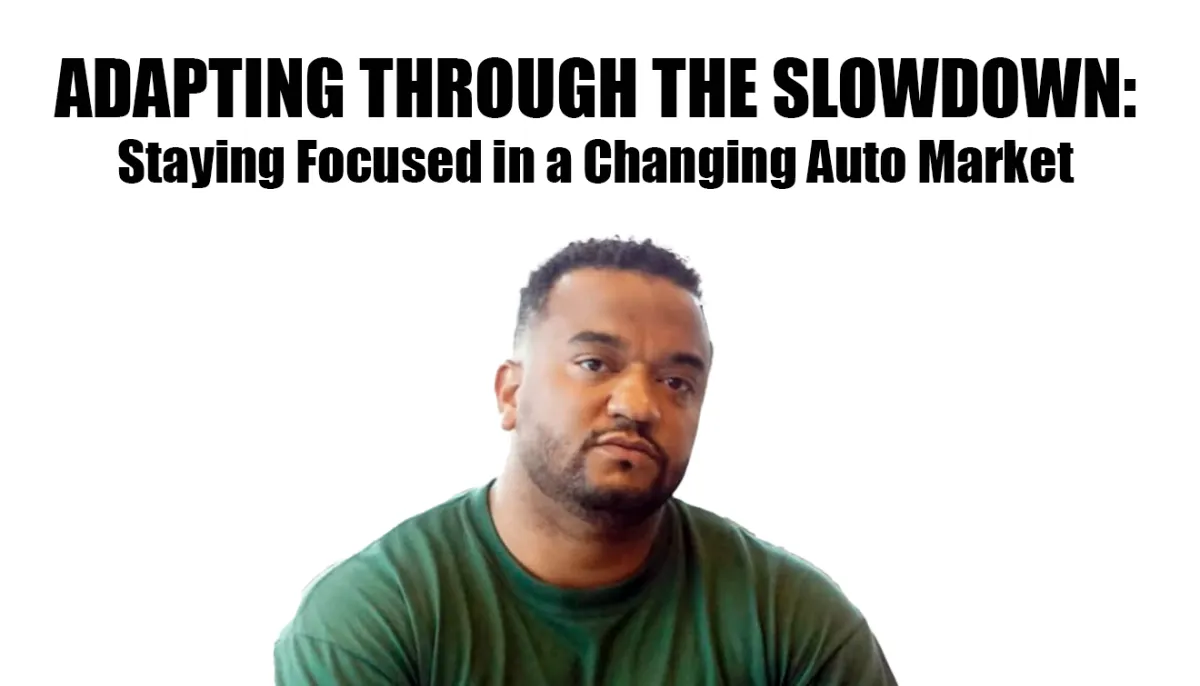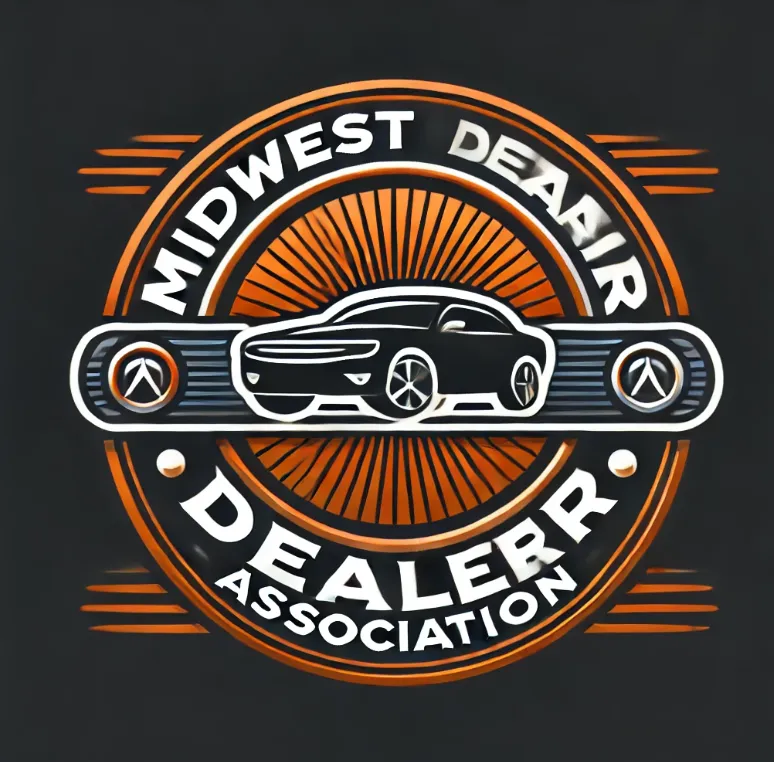
Adapting Through the Slowdown: Staying Focused in a Changing Auto Market
By Dee Terrnigian
The car business isn’t what it used to be.
Anyone who’s been around long enough knows this industry moves in cycles—sometimes fast, sometimes painfully slow. Right now, we’re in one of those slowdown phases that test even the best of us. The ebb and flow of an unpredictable market can be frustrating and uncertain, especially when so many of the variables—interest rates, consumer confidence, used inventory pricing—are completely out of our control.
What’s making this particular slowdown unique is how multiple economic forces are converging at once. Rising vehicle transaction prices from the post-pandemic surge never fully reset, while higher borrowing costs have eroded affordability for the average buyer. Many consumers are still “payment fatigued” from loans refinanced during the stimulus years, leaving less disposable income to upgrade or trade. Meanwhile, manufacturers are throttling production to protect margins, keeping new car supply balanced but tightening the flow of desirable pre-owned units into the market. Add in an aging vehicle fleet, cautious lenders, and the growing appeal of subscription and lease alternatives, and it’s clear that 2025’s auto market isn’t just slow—it’s recalibrating. These shifts require sales professionals to think long-term, reframe value, and operate with the kind of adaptability that separates survivors from spectators.
Throughout 2025, used car sales have consistently trended downward. It’s not just a dealership problem—it’s a national trend. According to data from Cox Automotive and CarMax, consumer spending has tightened across nearly every retail segment, and used car movement has slowed as buyers take a more cautious approach. Personally, I’ve experienced one of my slowest years. I used to average around 35 units a month; now, I’m closer to 20. While my highline and exotic sales have grown, my subprime business has dropped significantly.
What’s driving this pattern is the ripple effect of prolonged economic tightening. The average used car loan rate has climbed well above 10%, with some subprime borrowers facing rates that simply price them out of the market. Inflation has kept everyday costs like housing, insurance, and groceries stubbornly high, forcing many consumers to delay major purchases. Trade-in equity—once a key motivator during the pandemic boom—has evaporated as used values normalize, leaving fewer buyers with meaningful down payments. For dealers and sales professionals, this means fewer “easy deals” and a renewed emphasis on trust, education, and creative financing solutions. It’s a reminder that success in this environment isn’t about chasing volume—it’s about helping customers navigate financial uncertainty with confidence and clarity.
I’m doing all the same things—maybe even more: heavier advertising, longer hours, tighter follow-up, and increased outreach to my existing clients. But even the hardest-working salespeople are feeling the shift. The truth is, the market itself is changing, and it’s our responsibility to change with it.
The dynamics of buyer behavior have evolved dramatically over the past few years. Customers are spending more time researching vehicles online, comparing payments, and reading reviews before ever stepping foot on the lot. Many arrive already pre-qualified through online lenders, leaving less room for traditional in-person negotiation and more emphasis on digital transparency and service. Dealers and consultants must now meet buyers where they are—on social media, through video walkarounds, and via fast, responsive messaging. At the same time, new technology like AI pricing tools and predictive analytics are reshaping how leads are generated and nurtured. In this environment, the salesperson’s role has expanded from simply selling cars to managing relationships, curating experiences, and delivering trust in a market where every deal feels like a long game.
As a sales consultant at Twins Buick GMC in Columbus, Ohio—and as someone who also brokers private and specialty sales independently—I’ve seen both sides of the business. On one end, franchise dealerships are tightening operations to maintain margins; on the other, private buyers are more selective, often choosing to wait for rates or prices to improve before making a move. This creates a slower sales rhythm and demands a higher level of professionalism, patience, and adaptability from every salesperson who wants to stay relevant.
What’s become increasingly clear is that the middle of the market is thinning out. The days when mid-tier buyers could easily upgrade every few years are giving way to two distinct segments: cash-ready highline clients who value exclusivity and credit-constrained consumers simply trying to stay mobile. This polarization forces professionals like me to operate across very different buying behaviors—crafting tailored experiences for high-value clients while offering creative financing guidance and realistic expectations for budget-conscious ones. At the same time, inventory mix, supply chain delays, and fluctuating manufacturer incentives have made timing everything. Navigating this balance requires not just selling skill, but financial literacy, market awareness, and the ability to communicate complex realities with clarity and confidence.
Even for the most self-driven among us, slower numbers can take a mental toll. It’s easy to point fingers at politics, the economy, or global issues, but that energy doesn’t move the needle. Over time, I’ve learned that the only productive focus is on what I can control—my effort, my communication, and my consistency.
I stick to my plan.
I pivot when needed.
I adjust my marketing.
In a tighter market, that means refining outreach, improving messaging, and making sure every customer interaction adds value. I’ve increased my focus on digital visibility, social engagement, and word-of-mouth referral strategies. I’ve also adjusted how I position certain vehicles—helping used car buyers explore lease or new vehicle options when it fits their budget and long-term goals. This shift not only helps sustain volume, but it also builds stronger customer relationships that carry forward into future cycles.
Right now, retention is everything. Every follow-up call, every satisfied customer, every service department visit matters. When the market tightens, loyal customers become your lifeline. They’re the ones who will return, refer friends, and trust you to guide them when the economy starts to improve again. That kind of stability doesn’t happen by accident—it’s earned through years of doing things the right way.
So, to every dealer, manager, or salesperson feeling the effects of the slowdown: stay the course. The work you put in now—the discipline, the communication, the professionalism—will set you apart when the next upswing arrives. Markets recover, opportunities return, and those who adapt will always come out stronger.
If you’re looking for mentorship, strategy, or accountability, I have limited spaces available for the Midwest Dealer Association Mentorship Program beginning January 2026. I’d be glad to connect with anyone who’s ready to sharpen their skills and stay focused through whatever this market throws our way.
